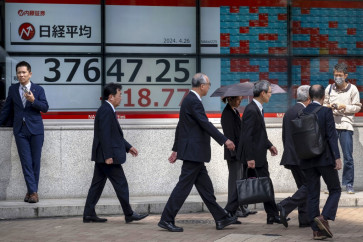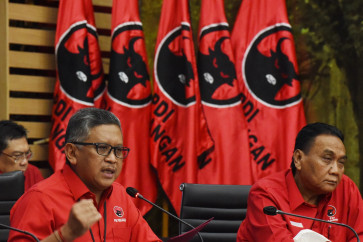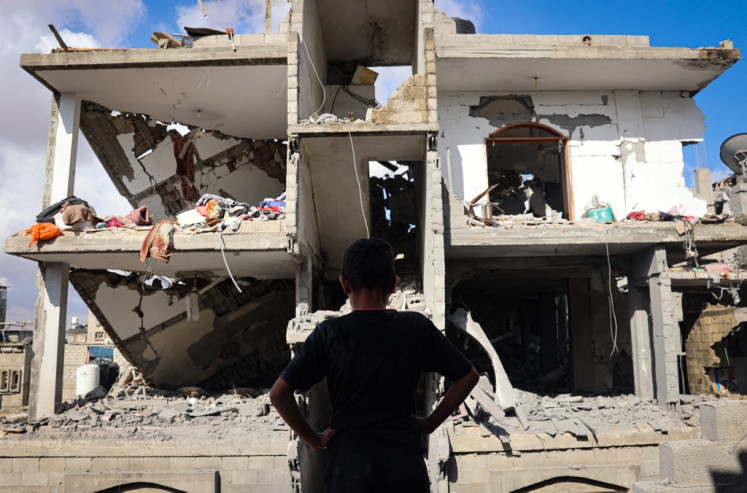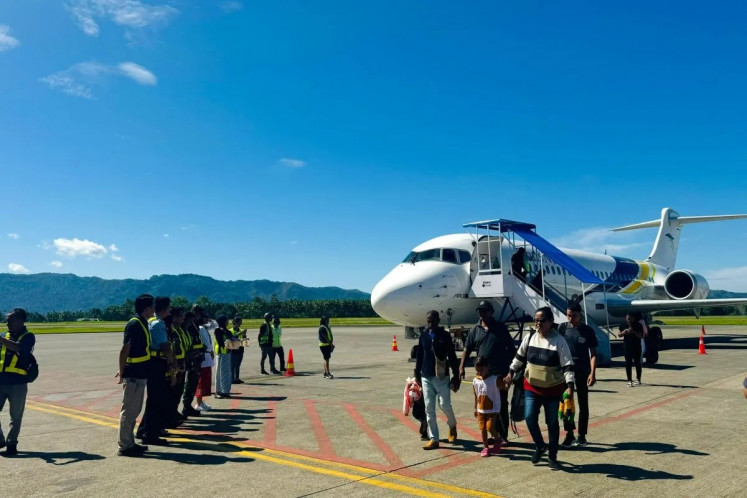People complain of worsening traffic following 3-in-1 removal
People are voicing their complaints following the removal of the three-in-one traffic policy on May 16, reporting worsening traffic congestion along the capital’s main roads, as the Jakarta administration has yet to come up with a policy to replace the traffic regulation.
Change Size
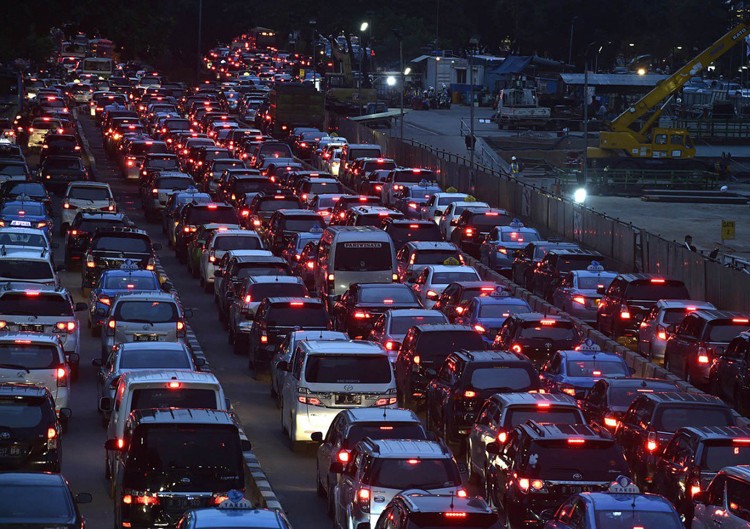 Traffic builds up on Jl. Sudirman during the trial removal of the three-in-one traffic restriction on April 5. Although the policy removal is said to have worsened traffic congestion, the city administration has said that it will not reinstate it. (Antara /Puspa Perwitasari )
Traffic builds up on Jl. Sudirman during the trial removal of the three-in-one traffic restriction on April 5. Although the policy removal is said to have worsened traffic congestion, the city administration has said that it will not reinstate it. (Antara /Puspa Perwitasari )
P
span style="font-size:10.0pt;font-family:Arial;color:#313534;letter-spacing:.1pt">People are voicing their complaints following the removal of the three-in-one traffic policy on May 16, reporting worsening traffic congestion along the capital’s main roads, as the
Since the policy removal, Jl MH Thamrin, Jl. Sudirman and Jl. Gatot Subroto, where the three-in-one policy had been enforced, has been packed with vehicles, especially during morning and afternoon rush hour.
Fajar Ardianto, a lawyer who works at an office located on Jl. Gatot Subroto, has given up going to work via car or bus from his house in
Fajar said he used to leave home at 7 a.m. and would made it to work by 9 a.m. when the three-in-one policy was in place, but now arrived at the office at 10 a.m. on account of severe traffic.
Putri Marsellia, postgraduate student at
“It now takes an hour to get from the Semanggi toll road to Pancoran. Previously, it only took less than 45 minutes,” Putri said.
Jakarta Governor Basuki "Ahok" Tjahaja Purnama has been informed that the number of vehicles on the road has increased by 20-30 percent since the removal of the three-in-one policy, however he has stressed that he has no plans to reinstate it as he believes the policy resulted in child exploitation.
The transportation agency, traffic police and the Jakarta Transportation Council (DTKJ) have conducted a forum group discussion for the third time to formulate a policy to replace the three-in-one policy.
From the discussion, two policies have been suggested to temporarily replace the three-in-one policy: the odd-even plate number restriction and one-way traffic system. The city administration has been preparing the electronic road pricing (ERP) policy, which is scheduled to be implemented in 2017 as a long-term traffic policy on the main city roads.
Transportation agency head Andri Yansyah said earlier that the agency was reviewing the possibility of implementing a one-way traffic system along Jl. Sudirman and Jl. Thamrin.
“For example, the route from the south to the north will be open in the morning. In evening, the route will be open in reverse,” Andri said.

But until the city administration decides on a new policy, Andri advises motorists to monitor traffic congestion through smartphone apps such as Waze or Google maps.
Separately, DTKJ chairman Ellen Tangkudung suggested that the administration prepare the ERP system so that the policy could be implemented as soon as possible. “If the agency puts too much concern on the temporary policy, we are worried that the implementation of the ERP system will be delayed again,” she added.
Ellen doubts that agency’s plan to implement a one-way system will be effective in easing congestions along Jl. Sudirman and Jl. Thamrin.
The one-way system has been effectively implemented on roads such as Tomang and Antasari, but a similar policy cannot be implemented on longer and busier roads such as Jl. Thamrin, Jl. Sudirman and Jl Gatot Subroto, she added.
Meanwhile, Indonesian Transportation Society (MTI) chairman Danang Parikesit said that the one-way system could potentially mitigate traffic congestion on roads, but the administration should be ready to face the consequences of a one-way system, which is an increase in fuel consumption in the capital.
“The one-way system may help the administration mitigate traffic gridlock. However, fuel consumption will increase 20 to 30 percent. It means the subsidy for fuel will increase too,” Danang said.
Commuting time will increase 20 to 40 percent, he said, adding that improving public transportation services is the answer to alleviating traffic woes in the city.
“Therefore, before issuing a temporary policy and introducing the ERP system, the city administration needs to provide commuters with better public transportation,” Danang said. (bbn)


